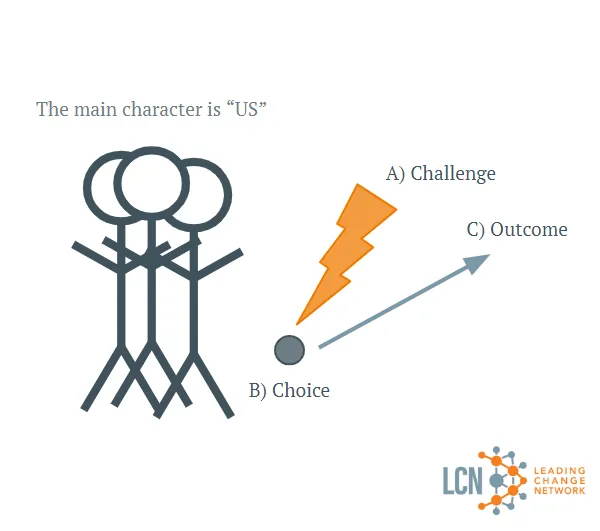Story of Us
Introduction
The goal of a “story of self” is to enable others to “get you.” The goal of a “story of us” is to enable others to “get each other.” We tell a “story of us” to move others to join with one in collective action based on values they share. It is not a “categorical” us – people who fit into a particular category. It is an “experiential” us – people who may share certain values, rooted in common experience. This “us” is rooted in the experience of the “people in the room.” It works when people feel part of an “us.”
Your Story of Us may be a story of what we’ve already done together (common experiences), challenges we’ve already faced, and outcomes we’ve achieved. Or it may be a story of some of our shared heroes, challenges they faced, and outcomes they’ve achieved. Hearing how we’ve met Challenges in the past gives us hope that we can face new challenges together.
Crafting Us in the Room
In this video Sarah explains to us how to craft the story of us, the us in the room.
Although the reach of a story of us may extend far beyond “people in the room” it becomes real only in the experience of the “people in the room” – or not. The test is simple. As we heard this story did we begin to feel like an us? The experience of shared values may grow out of stories of historic moments we remember, or have heard of; they might be stories of life events like having children, stories of finding out you were accepted to this program; stories of what happened the first time you met, or last night, or this morning. And, like all stories, the more detailed, the more specific, and the more visual they are, the more effective they will be. What were the names of the people involved? What did they look like? How were they different? Sometimes stories of us emphasize obvious differences in race, religion, gender, age, for example, may actually highlight commonality of values or common purpose.
Narrative Structure is Shared

The Challenge
The challenges “people in the room” have faced in the past, or face now (made real with stories, images, and details, not statistics).
The Choice
For a story to be a story, it centers on a “choice”. What choices did “people in the room” have to make to join this “us”, to be here, in this room, in this country, in this profession, to have access to this opportunity, to have learned what we are learning? In a story of us, the moments of choice we recall are those in which we responded with the kind of action that can make them sources of hope. People had to take risks, for example, to become part of this class, workshop, campaign. Founding stories recount choices made by those who initiated the community, enabling us to experience the values that motivated them.
The Outcome
Stories with vivid images that remind the “people in the room” of what they’ve achieved. Their own experiences of hope, experiences that point to your future.
Susan Christopher’s Story of Us
As you watch, focus on the elements of the Story of Us that you hear in her story.
Activity
Now it’s your turn to practice writing your Story of Us. Download this worksheet and get started. Remember that the story of us is successful when people feel part of the story and the experiences illustrated! So get on the bike with other partners to brainstorm a story of us and get into specific moments of your experiences together that portray your leadership as a group.
Test your knowledge
Which statement about the Story of Us is false?